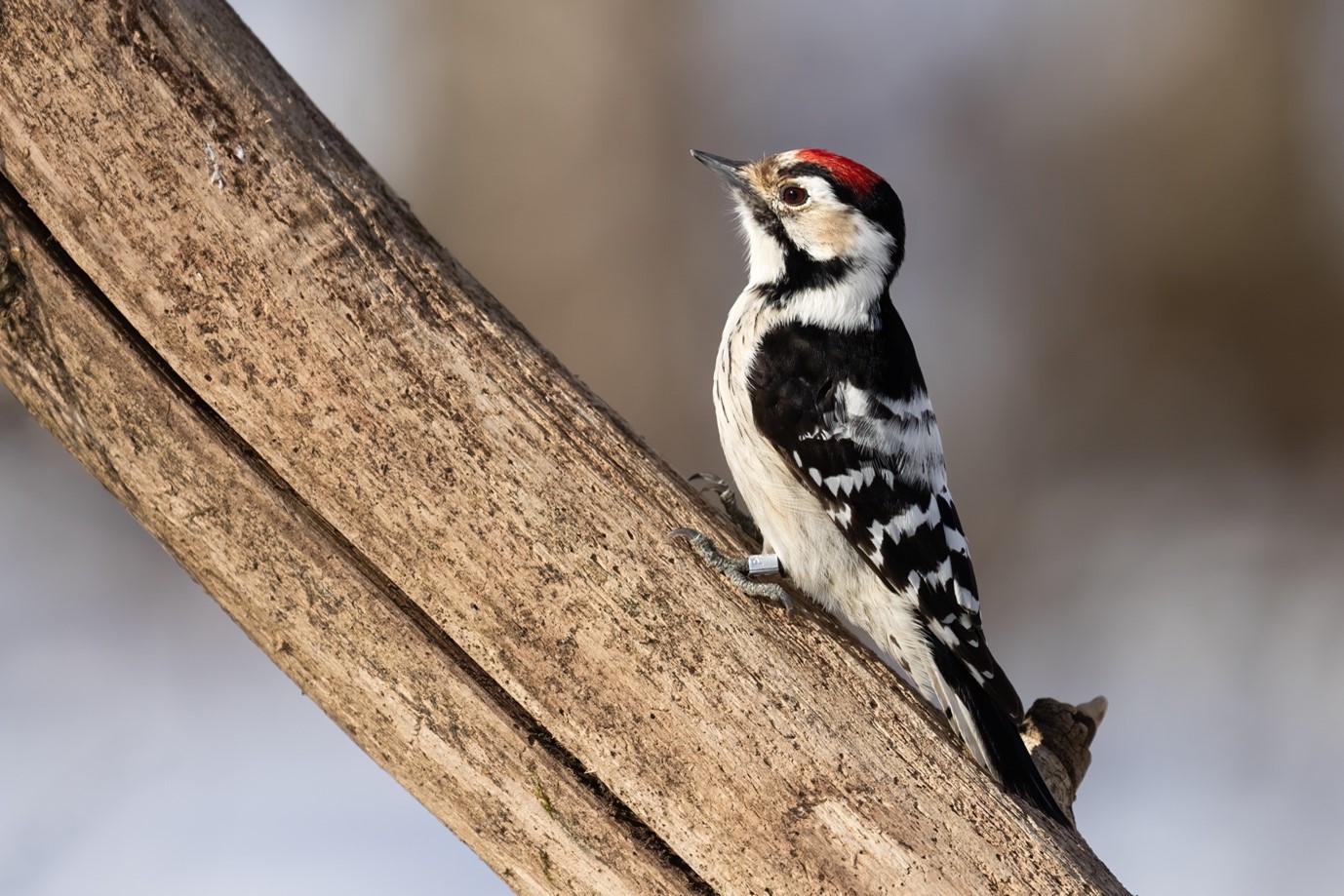Lesser Spotted Woodpecker
March 28, 2024

The clue really is in the name; the lesser spotted woodpecker is an elusive bird that likes to dwell out of sight, in the tops of trees. It’s also small – about the same size as a sparrow – and chronically endangered.
It has a black and white head with a red cap on the males. It also has a stripe effect on its wings and a white breast with dark streaks. Not to be confused with the Great Spotted Woodpecker, it’s much larger cousin, which has a red rump under its tail feathers and lacks the same white stripes on the wings.
If you’re lucky enough to spy one, it’s a real treat. They have a really sweet way of bouncing about on a branch.
Feeding
Lesser spotted woodpeckers like to feed on insects and invertebrates. Their powerful beak enables it to peck at dead and rotten wood to gain access to the beetle larvae within. They’ll also feed on other insects they find on tree trunks and branches.
Nests and Breeding
Lesser spotted woodpeckers like to raise their young high up in old trees, where they’ll often create a hole and chamber by using their powerful beaks to drill into the wood. Lesser Spotted Woodpeckers like to breed in late April, only producing a single clutch. They’ll lay between 4-6 eggs, which hatch after about two weeks. The chicks will spend about 3 weeks in the nest before fledging.
Where Do You Find Them?
The Lesser Spotted Woodpecker loves a mature woodland. It particularly enjoys the dead and rotting trees found in this environment. The species is rare with the largest numbers found in southern England with the odd scattered populations in Wales and a small number in Yorkshire.
If you’d like to spot one, get a good pair of binoculars and aim them at the tops of trees and be patient.
They have a distinct way of flying in an undulating manner. If you’re privileged to see a Lesser Spotted Woodpecker up close, you might notice that it can stand vertically on tree branches. This is because, unlike most birds, they have two forward facing toes and two backward facing toes enabling them to stand securely in an upright position on the trunk of a tree.
Conservation
Lesser Spotted Woodpecker is an endangered bird with roughly 2,000 pairs thought to be left in the UK. The loss of ancient woodlands and the habitat of dead and rotten wood they provide has contributed to this decline.
